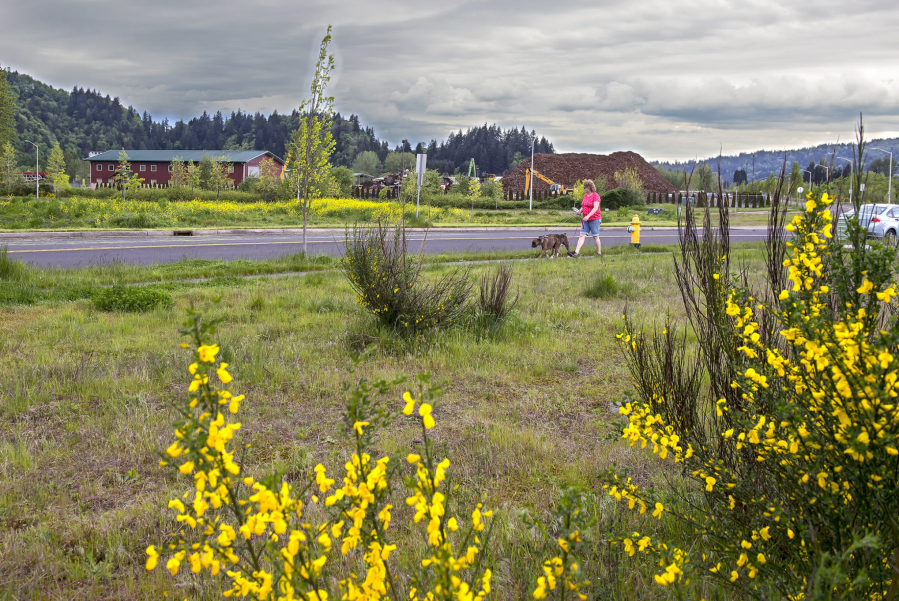LONGVIEW — The public relations battle is underway as Pacific Coast Fertilizer beats back against what it calls “misinformation” from opponents to its proposed $1 billion ammonia plant at Longview’s Mint Farm Industrial Park.
After pitching the project a year ago, Pacific Coast officials have been quietly building the foundation for their project in the community for the last year before launching a formal environmental review with the city last month.
Wednesday marked the first time the public could weigh in on the project. Two open-house style scoping meetings were held in the afternoon and evening.
Pacific Coast would convert natural gas to anhydrous ammonia to produce 1,650 tons of liquid fertilizer daily. The fertilizer would be marketed to Northwest farmers — who currently pay a premium on anhydrous ammonia imported from Canada and the Caribbean.
In an editorial board interview with The Daily News on Tuesday, Pacific Coast officials said they’re already seeing misinformation.
Safety, spills and the risk of explosion are among the top concerns cited by opponents. But explosions of anhydrous ammonia are extremely rare, according to company officials. They added that anhydrous ammonia is not the same as ammonium nitrate, the type of fertilizer used in the 1995 Oklahoma City bombings. Oregon’s largest fertilizer plant, the Dyno Nobel facility just north of St. Helens, Ore., has manufactured anhydrous ammonia for years without a serious incident, they said.
“A facility such as this is designed in such a way that the risk of any kind of fire explosion, leak or spill is really negligible,” said Lee Raymond, project manager of Pacific Coast. “This is a well-established technology. They’ve been building facilities like this for pretty much a century. So these methods are tried and tested. There are very few incidents that occur inside manufacturing facilities that involve ammonia.”
Opponents point out that Pacific Coast Fertilizer is a new company. But Raymond said the companies backing the project — Texas-based Saturn Ferrostaal Chemicals LLC, Ferrostaal and Haldor Topsoe — have a long history of building and operating similar facilities.
Critics also have questioned whether the company’s 80 to 100 employees will be from the local area. Pacific Coast officials said Tuesday they intend to hire as many local workers as possible. This week they met with representatives from Lower Columbia College about the possibility of creating a program to train local workers on skills needed for an ammonia plant, Raymond said.
The company’s assurances won’t sway some opponents.
“I think this is the biggest mistake. It’s too close to residential areas,” said Gloria Sanders of Longview, member of Landowners and Citizens for a Safe Community. Sanders wondered what would happen in the event of an earthquake or fire at the plant.
Joyce Riggins of Longview said she lives a block away from the project facility. She worried about the noise and vibrations from trucks serving the plant. Riggins and Sanders both said they attended the scoping meeting to hear how the company planned to market the project.
Other community members attended to show their support.
Mike Bridges, president of the Longview-Kelso Building Trades Council, said the complex project would employ up to 1,000 construction workers for three years in the community — much longer than the typical construction project.
“I think this project is unique. It’s something that there’s a demand for in the state of Washington. There’s no rail impacts. It seems like it’s in a good location because it’s already zoned for industrial,” Bridges added.
And because the project isn’t on waterfront property, it won’t have to obtain a shoreline permit or lease state aquatic lands.
It would use 50 million cubic feet of natural gas daily, tapping into an existing pipeline owned by Nippon Dynawave. At peak times during the summer and fall, about 60 trucks a day would leave the plant, the company said.
The 30-day scoping period closes Nov. 15. A draft EIS is due out in the spring.



